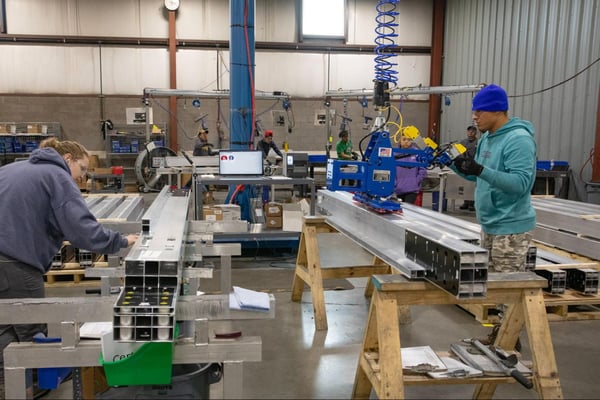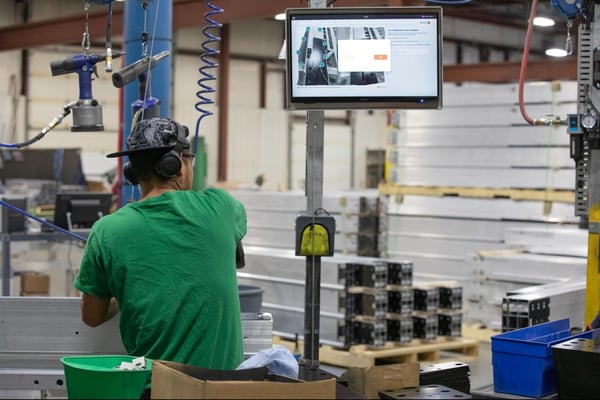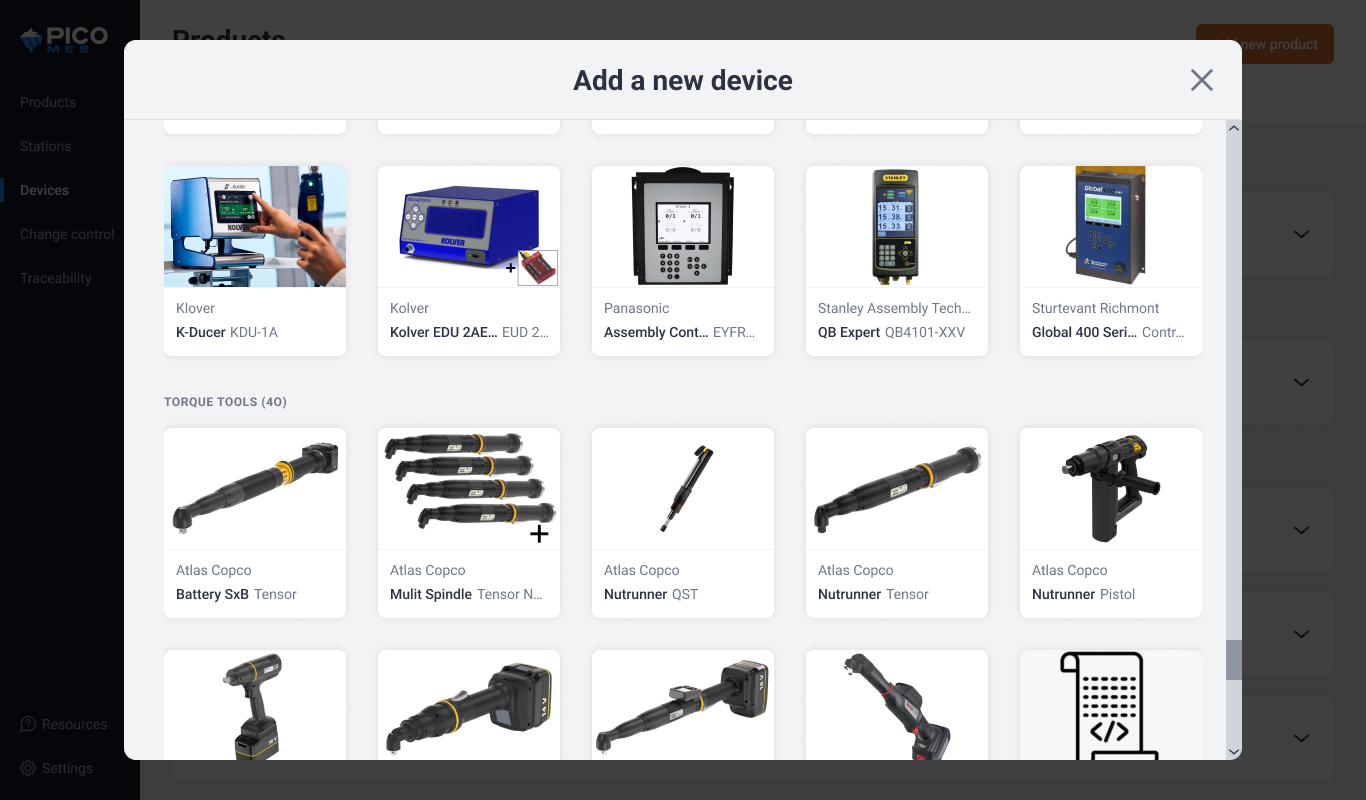#{ item.name }
#{ truncateText(item.metadescription) }
Pollington Machine Tool is a family-owned contract manufacturer with fabrication, metalworking, and final assembly capabilities that serves customers in aerospace, defense, and automotive. Recently, the company became a Tier 1 automotive supplier for an electric vehicle OEM. It was apparent that passing the safe launch qualification phase with traditional paper-based work instructions was going to be a challenge.
For the electric vehicle OEM, Pollington is responsible for the final assembly of their side rails. The side rails are vehicle chassis that contain batteries, motors, electronic components, suspensions, wheels, and base structures. The side rail assemblies themselves are quite complex, consisting of 30 parts that range from long, machined extrusions to small clips and crush tubes.

Pollington Machine Tool’s assembly area
To pass the safe launch qualification, Pollington needed to manufacture 4,000 assemblies with zero defects – 2,000 for the left side and 2,000 for the right. Essentially, they had to prove a consistent, repeatable process for production. However, after three months of trying, they had not yet succeeded.
Pollington manufacturing engineer Chris Stewart said, "We'd complete hundreds of assemblies only for one to be missing a clip. That reset the counter to zero, and we'd start over to assemble 2,000 units." Paper instructions in physical binders proved insufficient for operators to learn and be consistent in building complex assemblies.
To complicate things more, skilled labor is difficult to find in the tiny town of Marion, Michigan (approximate population of 900 people). Pollington relied on Spanish-speaking factory operators with an onsite interpreter. Despite having a well-documented process, improvements were needed to expedite the completion of the safe launch as production volumes ramped up.
There was also a need to improve traceability for faster response, in the event of a quality concern. Engineering Manager Brian Priddle said, "As a Tier 1 in automotive, you must have tight traceability. If there's a quality concern, you need to be able to react very quickly to identify and isolate those parts. The OEMs need answers in minutes to keep their production lines running."
Stewart added "Through the old way of doing everything on paper, it's kind of hard to find the information you need if there are questions." Searches could take hours.

Chris Stewart, Manufacturing Engineer at Pollington Machine Tool shares how their lack of traceability used to cause him to have a few late nights at work.
Pollington implemented digital work instructions from Pico MES. The software easily uploads images with annotations and video explanations along with translated work instructions, guiding Pollington’s operators through each step of the side rail assembly. Before advancing to the next operation, the software verifies that all torque values and sequences have been followed. Stewart said, "It is easy to follow along with the instructions. You could build the assembly without any prior training."
 The visual worker guidance prompts the factory operator on what to do next, and if they are building product correctly. It is a gatekeeper in the background, and not disruptive to their daily flow of things.
The visual worker guidance prompts the factory operator on what to do next, and if they are building product correctly. It is a gatekeeper in the background, and not disruptive to their daily flow of things.
For its pilot station, Stewart said, "We spent about a week developing our system. Then, we spent two to three days making sure everything was in place, including training. In less than two weeks, we were analyzing the manufacturing data."
Priddle said, "With Pico's digital work instructions, we were able to pass the safe launch within 2 weeks. That was a big deal."
Hear Pollington Machine Tool talk more about their experience in working with Pico MES’s manufacturing execution system.
The digital work instructions also helped immensely with on-the-fly training. "If we had everything on paper organized in a three-ring binder, it'd be nearly impossible to go through all the instructions. They'd be constantly flipping the pages back and forth," said Stewart.
On traceability, Stewart said, "It's a huge advantage. I can just go into Pico and plug in a serial number or a lot number, and the data is all there. That has saved so much time, and it's such a streamlined, easy process."
Stewart concluded, "We get a lot of value from using Pico MES. It really helps make us more efficient."
In the past 12 months, Pollington's digital transformation has been substantial:
Pollington's Pico MES journey has just begun. With each achievement, more ideas on how and where to use it were springing up, such as integrating more off-the-shelf connected tools into the digital workflow.
When it has a robust traceability dataset, it plans to allow customers to access the information directly to get answers immediately. Priddle said, "They wouldn't even have to call us at that point."
Priddle closed with, "We're going to start collecting every piece of data we can in Pico MES. The traceability with digital data records opens up many possibilities for continuous improvement."
1. Download the full case study to learn more details about Pollington's journey in error-proofing assembly processes.
2. Hear Chris Stewart from Pollington share more details about the safe launch process and the value of traceability in this on-demand webinar with Assembly Magazine
3. Read our blog on 6 ways to empower factory operators through digital work instructions to learn how to provide better guidance to your frontline workers.
#{ truncateText(item.metadescription) }
Step into the future of factory operations with Pico MES. Start your journey toward a more efficient, error-proof factory floor today.
